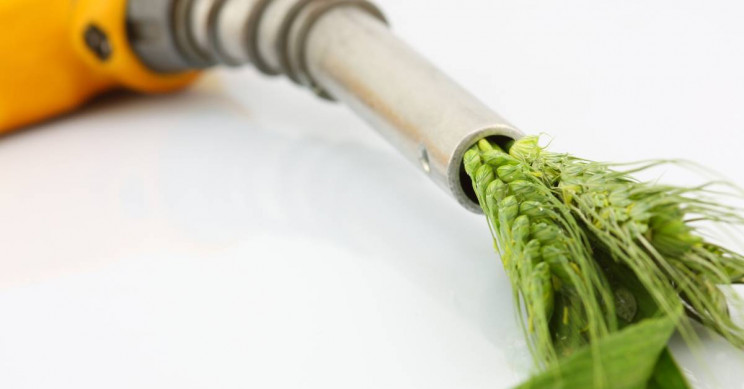Grain-based ethanol supply aims to double as India targets 20% blending goal

Grain-based ethanol supply in India is poised to more than double to 4.23 billion liters by 2025, a senior government official in sugar research told S&P Global Commodity Insights at India Biofuel Expo 2024.
Grain-derived ethanol supply for fuel blending purposes is estimated to jump from 2.08 billion liters in 2023-24 to 4.23 billion in 2024-25, Assistant Professor (Sugar Engineering) Anoop Kanaujia of the National Sugar Institute said June 7.
The supply of grain-based ethanol is further projected to increase to 4.66 billion liters in 2025-26. Sugar-based ethanol supply for blending is pegged at 5.5 billion liters in the same period.
India, the world’s third-largest fuel ethanol producer, aims to achieve a 20% ethanol-blending rate in gasoline by 2025.
However, market participants have been concerned about the scarcity of first-generation feedstocks, primarily molasses sourced from sugarcane, that could delay that timeline. They expect the new government to address challenges in utilizing second-generation feedstocks such as grain and biomass waste to ensure a stronger ethanol production supply chain.
More distilleries in India are moving toward grain-based ethanol production, which is currently based on damaged food grains like broken rice or rice supplied by the Food Corporation of India, along with the usage of other feedstocks like corn, bajra and sorghum.
Many facilities are using multiple feedstocks to ensure improve feedstock security while maintaining output.
As of March 31, India achieved 11.96% ethanol blending in the first four months of supply year 2023-24 (December-November), government data showed.
The official said ethanol output with every metric ton of feedstock is higher for grain-based feedstock against that from sugarcane. Broken rice and corn as feedstocks have ethanol output of 420 liters/mt and 380 liters/mt, respectively, but ethanol output from sugar syrup is pegged only at 300-320 liters/mt.
| Feedstock | Quantity of ethanol/mt
feedstock (Liters/mt) |
| C-heavy molasses | 225-235 |
| B-heavy molasses | 310-330 |
| Sugar syrup | 300-320 |
| Broken rice | 400-420 |
| Surplus rice available with FCI | 440-460 |
| Maize | 370-380 |
The Indian government has also put its weight behind grain-based ethanol such as corn, as it already planned to supply corn at a minimum support price of Rupee 20,910/mt ($250.77/mt) to distillers for producing ethanol.
Under the scheme, the National Agricultural Cooperative Marketing Federation of India and National Cooperative Consumers Federation of India will enter five-year agreements with farmers to procure corn.
The primary objective of the plan is to ensure uninterrupted supplies of feedstocks to distillers to produce ethanol, while also augmenting farmer incomes.
Moreover, amid reports of tightening sugar supply, the government already restricted ethanol production from sugarcane juice and B-heavy molasses. The government also restricted total sugar diversion toward ethanol to 1.7 million mt from 3.8 million mt last year.
Second-generation potential
The government official said India has potential to increase feedstock availability by also extracting 2G ethanol from bagasse, a promising crop residue-based raw material.
Bagasse is a sugarcane residue for producing 2G ethanol, a cellulosic biofuel.
“At present, only sugarcane stalk is processed to extract juice and bagasse, the fibrous residue left over after the milling,” Kanaujia said. “The balance 37.37% of energy of the sugarcane plant remains unutilized. We will not be able to meet future ethanol demand without using nonfood feedstock.”
Earlier this year, a report from the Office of Principal Scientific Advisor advocated ways to produce ethanol from 2G feedstocks.
According to the report, cane-based ethanol is not adequate to achieve the blending mandate and has some negative environmental impacts, like greenhouse gas emission. The report also recommended introducing submandates, such as 10% of total blending to come from 2G ethanol, to build demand for it.
However, the official said 2G ethanol production remains expensive due to complex processing operations.
“The pretreatment and conversion cost remains an issue with 2G ethanol. Second-generation overall cost comes at Rupee 22/liters against Rupee 3-6/liters [for first-generation ethanol],” added Kanaujia.
Recently, the Indian Oil Corporation launched a 2G ethanol plant at its Panipat refinery, which is expected to produce 30 million liters of ethanol annually using 200,000 mt of agricultural waste.
According to the latest Biofuels Market Outlook by S&P Global Commodity Insights, India’s oil marketing companies received a cumulative 3.28 billion liters of ethanol as of end-May. Grain-based ethanol contributed 49% of the total, while sugar-based ethanol contributed the rest.
In May, the total ethanol supplied to OMCs was 582 million liters, a 28% increase from April’s supply of 454 million liters.
Read also
Wheat in Southern Brazil Impacted by Dry Weather and Frosts
Oilseed Industry. Leaders and Strategies in the Times of a Great Change
Black Sea & Danube Region: Oilseed and Vegoil Markets Within Ongoing Transfor...
Serbia. The drought will cause extremely high losses for farmers this year
2023/24 Safrinha Corn in Brazil 91% Harvested
Write to us
Our manager will contact you soon



